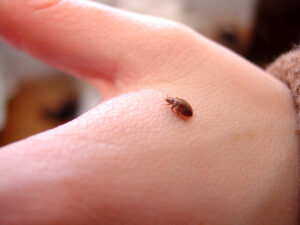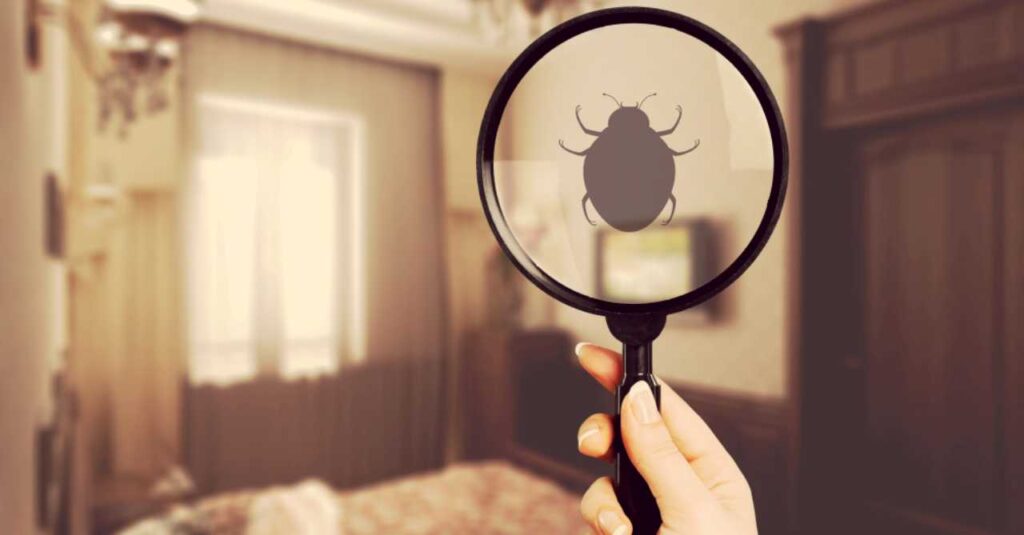Curious travelers may be interested to know whether Japan, renowned for its rich cultural heritage, stunning landscapes, and meticulous attention to cleanliness, is susceptible to the persistent nuisance of bed bugs. These tiny, blood-sucking insects have plagued humanity for centuries, causing discomfort and anxiety wherever they infest; thus, knowing how to get rid of bed bugs will prove to be valuable for residents of Japan.
While Japan is known for its impeccable cleanliness standards, the issue of bed bugs can still arise, even in the most well-maintained accommodations. However, fear not, for in this guide, we will explore effective strategies and practical tips on how to get rid of bed bugs in Japan, allowing you to enjoy a worry-free stay and fully immerse yourself in the captivating wonders of this captivating country.
Contents
- What Causes Bedbugs?
- Tips to Prevent Bed Bugs in Your Home
- Step-by-Step Guide to Getting Rid of Bed Bugs in Japan
- Step 1: Inspection and Identification
- Step 2: Cleaning and De-cluttering
- Step 3: Heat Treatment
- Step 4: Cold Treatment
- Step 5: Mattress Encasement
- Step 6: Residual Insecticides
- Step 7: Maintain Vigilance
- Step 8: Seek Professional Help if Necessary
- Summary
Like most creepy crawlies, bed bugs love the summer in Japan.
With the hot and moist climate providing the perfect breeding ground, these resilient insects are as prevalent in Japan as they are in many other countries, making them a persistent nuisance to deal with.
As a traveler, you must remain vigilant, as bed bugs can easily hitch a ride on your clothes or luggage, potentially infesting your own living space.
It’s crucial to thoroughly inspect any hotels or accommodations you stay in to ensure you don’t unwittingly bring these unwanted guests home with you.
Once bed bugs have infiltrated your living environment, maintaining cleanliness becomes paramount in combating their presence.
Cleaning your sheets daily and diligently vacuuming your mattress can help eliminate a significant number of these pests.
Another effective method for eradicating bed bug infestations is through cold treatment.
However, in the hot Japanese summer, maintaining a consistently cold temperature in your bedroom can be challenging.
If your efforts prove unsuccessful and the bed bugs persist, it is advisable to seek professional assistance from a private pest control expert who specializes in dealing with these resilient insects.
Their expertise and specialized techniques can help ensure a thorough eradication of bed bugs, allowing you to regain peace of mind in your own home.
What Causes Bedbugs?
Bed bugs are pesky little insects that can invade your home and disrupt your peace of mind. Understanding the causes of bed bug infestations is crucial in preventing their entry and ensuring a bug-free living space.
- Travel and Infested Accommodations: Bed bugs often find their way into homes through travel. They are adept hitchhikers and can easily latch onto your luggage, clothing, or personal belongings. When you stay in infested accommodations, such as hotels, hostels, or even rental properties, bed bugs can crawl onto your belongings and inadvertently accompany you back home.
- Used Furniture and Upholstery: Another common cause of bed bug infestations is the introduction of infested furniture or upholstery into your home. Bed bugs can hide in the seams, crevices, or cracks of used mattresses, couches, or chairs.
- Close Proximity to Infested Spaces: Living in close proximity to areas already infested with bed bugs increases the risk of their entry into your home. This is especially relevant for individuals living in multi-unit buildings, such as apartments or condominiums.
Tips to Prevent Bed Bugs in Your Home
1. Inspect Accommodations: Before unpacking in a new accommodation, take the time to conduct a detailed inspection for any signs of bed bug activity. Here’s what to look for:
-
- Check the bedding for reddish-brown stains, indicating crushed bed bugs or their fecal matter.
- Examine the creases and folds of mattresses for live bed bugs or their tiny, dark spots.
- Look closely at upholstered furniture for any signs of bed bug infestation.
2. Proper Luggage Placement: When staying in hotels or other accommodations, use the following precautions to prevent bed bugs from hitching a ride back home with you:
-
- Utilize luggage racks, keeping your suitcase elevated and away from beds or upholstered furniture.
- Opt for a hard surface, such as a tile floor, to place your luggage.
- Avoid placing your luggage on beds, couches, or carpets, as these areas are common hiding spots for bed bugs.
3. Protective Encasements: Consider using protective encasements for your luggage to provide an extra layer of defense against bed bugs. These encasements are specially designed to prevent bed bugs from infiltrating your belongings and can be an effective preventive measure, especially when traveling to high-risk areas.
4. Inspection of Used Furniture: Before bringing used furniture into your home, carefully inspect it for any signs of bed bug presence. Focus your attention on seams, tufts, and potential hiding spots. Look out for dark spots, shed exoskeletons, or live bugs. If you suspect an item may be infested, it’s best to avoid bringing it into your home altogether to prevent an infestation.
5. Treatment of Used Furniture: If you decide to bring used furniture into your home, it’s advisable to treat it for potential bed bug infestations. Consider utilizing heat or cold treatment methods to eliminate any hidden bed bugs. These methods can effectively eradicate bed bugs at all stages of their life cycle.
6. Regular Home Inspections: Perform routine inspections of your living space to catch bed bug infestations in their early stages. Pay attention to the following signs:
-
- Dark spots or stains on bedding, furniture, or walls.
- Shed exoskeletons or tiny, translucent bed bug eggs.
- A distinct musty odor, often described as a sweet, sickly scent.
7. Seal Entry Points: Reduce the likelihood of bed bugs entering your home by sealing cracks, crevices, and gaps in walls, floors, or baseboards. By eliminating potential entry points, you create a less favorable environment for these pests to invade your living space.
8. Communication and Collective Action: Maintain open communication with your neighbors and building management regarding any bed bug sightings. By sharing information, you can collectively address and mitigate the spread of bed bugs within your building.
Step-by-Step Guide to Getting Rid of Bed Bugs in Japan
Step 1: Inspection and Identification
- Thoroughly inspect your living space, focusing on areas where bed bugs are commonly found, such as the mattress, bedding, furniture, and cracks in walls.
- Look for signs like reddish-brown stains, dark spots, shed exoskeletons, or a distinct musty odor.
- Confirm the presence of bed bugs before proceeding to the next steps.
Step 2: Cleaning and De-cluttering
- Begin by decluttering your living space. Remove unnecessary items that provide hiding places for bed bugs.
- Wash and dry all bedding, clothing, curtains, and other washable items on the highest heat setting to kill any bed bugs present.
- Vacuum carpets, furniture, and mattresses thoroughly, paying close attention to seams, tufts, and crevices.
Step 3: Heat Treatment
- Utilize heat treatment to eliminate bed bugs effectively.
- Washable items that can withstand high heat should be placed in the dryer for at least 30 minutes on the highest heat setting.
- For items that can’t be washed, such as shoes or stuffed animals, place them in a tightly sealed plastic bag and expose them to direct sunlight for several hours on a hot day.
Step 4: Cold Treatment
- If heat treatment is not feasible, consider using cold treatment.
- Place items that can withstand freezing temperatures, such as bedding, clothing, or small furniture, in sealed plastic bags and store them in a freezer at -18°C or below for at least 4 days.
- This will kill bed bugs at all life stages.
Step 5: Mattress Encasement
- Invest in high-quality mattress encasements specifically designed to trap and suffocate bed bugs.
- Encase your mattress and box spring, ensuring they are completely sealed.
- This will prevent bed bugs from escaping or re-infesting your sleeping area.
Step 6: Residual Insecticides
- Consult with a pest control professional or visit a local home improvement store for advice on safe and effective residual insecticides.
- Apply these products as directed in areas where bed bugs are likely to hide, such as cracks, crevices, and along baseboards.
- Always follow the instructions carefully and consider seeking professional help if needed.
Step 7: Maintain Vigilance
- Even after successfully eliminating bed bugs, it’s essential to remain vigilant.
- Continue monitoring your living space for any signs of bed bug activity on a regular basis.
- Practice good hygiene, cleanliness, and keep your living area clutter-free to minimize the chances of re-infestation.
Step 8: Seek Professional Help if Necessary
- If your efforts do not yield satisfactory results, it may be time to consult a professional pest control service.
- They have the expertise and specialized tools to deal with severe infestations effectively and can provide you with guidance on long-term prevention strategies.
Summary
In conclusion, Japan, like any other country, is not immune to the presence of bed bugs.

Despite Japan’s reputation for cleanliness, it’s important for residents to be prepared and knowledgeable about how to handle bed bug infestations.
By following the step-by-step guide provided, residents can take proactive measures to inspect, clean, treat, and prevent bed bugs from infiltrating their homes.
Remember, early detection and swift action are key how to effectively get rid of bed bugs and maintaining a comfortable living environment.
With these strategies in place, you can confidently address bed bug infestations and ensure a peaceful and bed-bug-free existence in Japan.
READ NEXT: Japan Do’s and Don’ts
